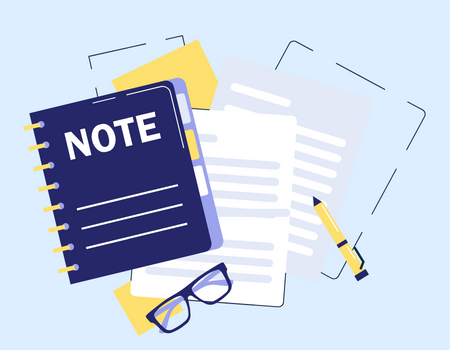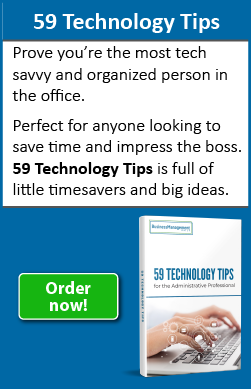How to take meeting minutes like a professional
Meeting minutes are a staple of all board meetings and internal company meetings. They serve as an official written record of a meeting to aid in future decision-making and fill in employees who couldn’t attend. Traditionally, the Secretary of the Board handles the writing of meeting minutes, but there are times when a Board member will appoint someone else as the minute taker. Examples include companies that don’t have a Board Secretary or instances where the Secretary cannot attend.
In these instances, attendees will assign someone to take notes and prepare formal meeting minutes for approval. Yet, if you’ve never written meeting minutes before, it may seem like an intimidating process. Or, if you’ve been assigned as the minute taker before but had no preparation or template to use, you may dread being in charge of Board meeting minutes.
The good news is that once you learn how to take meeting minutes properly, it will cease to be a cumbersome or confusing task. Instead, you’ll be able to quickly provide effective meeting minutes, all while not missing a beat of the meeting agenda.
That’s why I’ve compiled this guide on taking good meeting minutes, regardless of the meeting type. Read on to learn everything you need to know about taking minutes for your Board’s next meeting date.
What are meeting minutes for?
While they may initially seem trivial, meeting minutes serve several crucial purposes for Board meetings. Traditionally defined, meeting minutes are an official record of a meeting’s key points, action items, votes, motions, and abstentions.
Meeting minutes summarize the happenings of a team meeting, which is helpful for:
-
Filling in employees who couldn’t attend (they can typically view the meeting minutes online to stay updated with the latest developments).
-
For future reference, the board may decide how to tackle an action item during a meeting, so it’s crucial to write it down so they can consult with the plan later.
-
To serve as a reference point when the meeting affects other organizational projects or departments.
-
To remind employees/team members of specific tasks assigned to them.
These factors summarize the meeting minutes’ primary purpose — providing a step-by-step breakdown of what occurs during a Board meeting. However, the term ‘taking meeting minutes’ is a tad misleading, as it conjures the image of transcribing every word said during every minute of the meeting.
Where did meeting minutes come from?
It turns out that the original term was meeting minutes (my newts) — referring to minutiae or the small details of something. When taken in that context, the term’s true meaning starts to take form. Minute-taking is the process of documenting the minutiae of a meeting, not transcribing every single word spoken each minute.
The meeting minutes serve as a written record and a legal record. That means they are legal documents that can be referenced during an investigation. That’s why taking accurate minutes for each meeting is crucial while not including extra information that could harm your organization.
Besides documenting the meeting, minutes will also include information on:
-
The date and time of the meeting.
-
A complete list of meeting attendees and absentees.
-
Approval of the meeting agenda.
-
Approval of the meeting minutes.
-
Information on the next meeting agenda.
-
Any additions or amendments to the agenda or previous meeting minutes from team members.
-
Adjournment information (the time the meeting was adjourned and by whom).
How to take meeting minutes: a breakdown
Now that you know why meeting minutes exist and what they’re used for, it’s time to learn how to take them. Following this guide will ensure that you wind up with accurate meeting minutes that provide value to the organization. That way, you’ll never have to stress about being appointed the minute-taker for an upcoming meeting.
In general, there are five steps involved in the meeting minutes process:
-
Pre-planning. This is where you coordinate with the meeting stakeholders to prepare for minute-taking. Actions to take during this phase include devising a meeting minutes template to use.
-
Note-taking during the meeting. As soon as the meeting starts, you’ll need to start taking notes on all the most important points, votes, and motions. You can either take notes on a laptop or write them out by hand.
-
Writing the meeting minutes formally. This step transforms your notes into a formal meeting minutes document. It also pays to have a meeting template to use for the form.
-
Getting the meeting minutes approved. No meeting minutes document is official until it goes through the approval process. You’ll need to coordinate with your Board of Directors (or meeting attendees) to determine who you need to see to approve your minutes. It tends to be up to the Chair, but every organization is different.
-
Distribute the meeting minutes. The last step is distributing the meeting minutes online or through your organization’s network for future reference. If you use a program like Google Docs, you can quickly share the document with the rest of your team.
The meeting minutes process is in its simplest form, so let’s examine each step more in-depth.
The pre-planning phase
Your duty as the minute taker starts well before the meeting starts. It would help if you began preparing as soon as you learned you’re in charge of meeting minutes.
What does preparing for meeting minutes entail?
First, you must coordinate with your Chair when they create the meeting agenda. That will make it effortless to devise a template that addresses each agenda item you intend to cover. You can even create one template that serves as both the meeting agenda and a meeting minutes template.
Here’s what you should include in your template:
-
Include your organization name, date, and time at the top of the document formatted as a heading.
-
Include a brief opening that explains why the meeting is being held, who called it to order, and where it’s being held.
-
A complete list of attendees.
-
A list of absent employees.
-
Business from the previous meeting that needs a follow-up.
-
The new business will arise for the first time during this meeting.
-
Adjournment information.
-
Your name and the name of the Board member that approved your minutes.
As long as your template includes all these items, you’ll be all set to take detailed meeting minutes.
The note-taking phase

During this step, the meeting begins, and you start taking notes. It’s crucial to remember that you don’t need to write down every word that’s said. Instead, provide quick bullet points describing each major action item, motion, and vote.
If you prefer to type, you should bring a laptop to the meeting for note-taking. If you’re taking notes by hand, make sure you leave plenty of room on the paper for each section. The last thing you want is to wind up with illegible notes that you can’t turn into a meeting minutes document. Bearing that in mind, it’s wise to take your time while writing to ensure each word is as legible as possible.
Here are some other general note-taking tips:
-
Check off each of the meeting participants as they arrive. That will get the attendance/absentee list out of the way. Another alternative is to pass around an attendance sheet so participants can check themselves off.
-
Notate action items, votes, and motions as they occur. As soon as an action item gets mentioned, get your pen ready. To ensure everything is accurate and fresh, you’ll want to jot down the most important information as soon as you hear it.
-
Work from your outline. If you took the time to create a meeting minutes template (which you should), you’d want to have it by your side while you take notes. Instead of using a blank sheet of paper, your template will have spots for each action item and step of the meeting.
-
Get the gist of things. If you try to write down every word verbatim, you likely won’t be able to keep up and may miss something important. That’s why you should focus on keeping your notes as simple as possible. As long as you get the gist of each agenda item, you can always go back and add more detail later.
-
Record the meeting. Recording the meeting in real-time is the best way to ensure you don’t miss anything. You can use your smartphone or a small tape recorder to get audio of the entire meeting. When you’re typing the official meeting minutes, you can reference the tape to see if you omitted anything important.
Follow these tips, and you’ll have excellent notes to transform into a meeting minutes document quickly.
Writing meeting minutes
Next, learning how to take meeting minutes is the actual process of creating an official document. It’s crucial to note that this occurs AFTER the meeting has been adjourned. For this reason, it’s best to prepare the document as soon as possible so the meeting is still fresh in your mind. That will help you create a complete document that doesn’t miss anything essential.
You should also provide ample detail for each action item. Include a short description of each action and the rationale behind the decision.
Meeting minutes must be concise and readable, so be sure to edit your notes so they’re easy to read. When in doubt, write in plain, simple English to avoid confusion. There’s no need to get fancy here; your only goal is to communicate what happened in the meeting.
You should avoid anything subjective, like personal opinions when writing the meeting minutes. Instead, be as objective as possible while describing action and agenda items.
Also, it would help if you wrote everything in the same tense. If you write in the past tense, there’s nothing wrong with that, but the document must remain consistent.
Lastly, if you need to reference other documents in the minutes, link to them or attach them as an appendix instead of attempting to summarize them.
Approval and distribution
Once the meeting minutes document is complete, it’s time to bring it to the Board for approval. They will need to review, revise, and approve the minutes for distribution. It’s common for some organizations to wait to approve meeting minutes until the beginning of the next meeting. It will depend on how your organization does things, so ask around if you aren’t sure.
Once approved, the meeting minutes are an official and legally binding document. The last step is to distribute the minutes, and then your duty will be complete.
If your meeting minutes are in Microsoft Word or Google Docs, you can efficiently distribute them online or share them with team members.
Concluding thoughts: How to take meeting minutes
By now, you should have a better idea of how to take meeting minutes for your board. While the process may initially seem intimidating, there’s nothing to it.
All you need is a quality template, adequate planning, and a distribution plan — and you can knock out meeting minutes like a consummate professional.
More Resources:
The best virtual meeting platforms to pick from
Icebreaker ideas for virtual meetings (that employees won’t hate)
Virtual meeting problems & how to solve them




